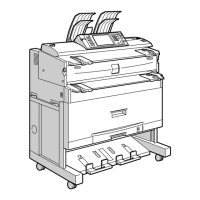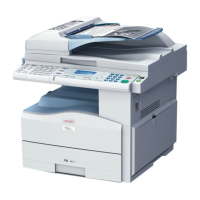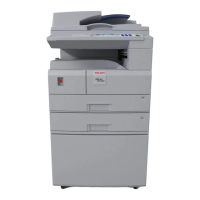Using PostScript 3
68
3
M Select the file you want to print by pressing it.
N Press [Print].
A confirmation screen appears.
If you have already set a password, proceed to the following step.
O Enter a password using the number keys on the password screen, and then
press [OK]
A confirmation screen will appear if the password is not entered correctly.
Press [OK] to enter the password again.
If you have not set the password, proceed to the following step.
P Press [Yes].
The stored print file is printed.
Note
❒ Press [Stop] to cancel printing.
❒ To cancel printing, press [Exit]. Then, press [Job Reset]. After it has started,
the file is deleted.
❒ The Stored Print files sent to the machine are not deleted unless you delete
them in the machine or select [Auto Delete Stored Print Jobs] (see “System”,
Printer Reference). For details, see p.71 “Deleting a Stored Print File”.
If the application has a collate option, make sure it is not selected before send-
ing a print job. The printer driver collates the Stored Print files by default. If
a collate option is selected from the application's Print dialog box, there may
be more prints than required.
Windows 2000 / XP, Windows Server 2003, Windows NT 4.0
A In the application, on the [File] menu, click [Print].
The [Print] dialog box appears.
B Right-click the printer icon, and then click [Printing Preference] on the command
menu.
If you are using Windows 2000, select the printer, and then perform the following
steps.
If you are using Windows XP or Windows Server 2003, select the printer, and
then click [Preferences].
If you are using Windows NT 4.0, select the printer, and then click [Properties...].
C Click the [Job Log] tab.
D In the [Job Type:] list, click [Stored Print] or [Store and Print].
• [Stored Print]
Stores the file in the printer and print it later using the control panel.
• [Store and Print]
Prints the file at once and also stores the file in the printer.

